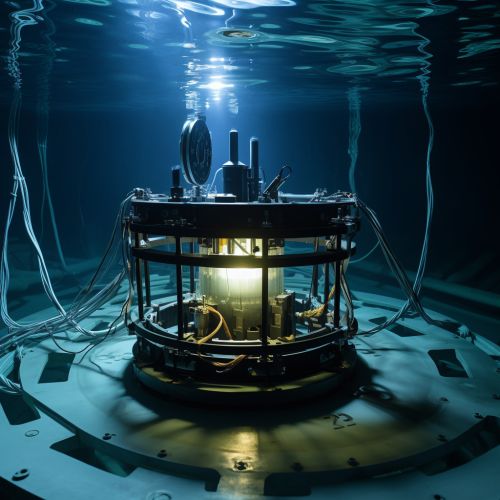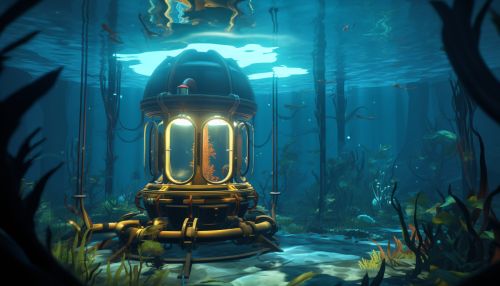XENON1T
Overview
XENON1T is a highly sensitive experiment designed to detect dark matter particles. It is located in the Gran Sasso National Laboratory in Italy, the largest underground laboratory in the world. The experiment is part of the larger XENON project, which aims to detect and study dark matter particles using liquid xenon as a target material.


Design and Operation
The XENON1T detector is a dual-phase time projection chamber (TPC) filled with over three tons of ultra-pure liquid xenon. The detector is designed to detect the tiny flashes of light and charge that are produced when a dark matter particle interacts with a xenon atom. The detector is housed in a large water tank to shield it from background radiation.
The operation of the detector relies on the principle of scintillation, where a particle interaction in the xenon produces a flash of light. This light is detected by an array of sensitive photomultiplier tubes located at the top and bottom of the detector. The amount of light detected can give information about the energy of the interacting particle.
Dark Matter Search
The primary goal of XENON1T is to search for Weakly Interacting Massive Particles (WIMPs), a leading candidate for dark matter. The detector is sensitive to the very rare events where a WIMP might scatter off a xenon atom and produce a detectable signal.
The search for dark matter with XENON1T is a challenging task due to the extremely low interaction rate of WIMPs. To overcome this, the detector is designed to be extremely sensitive and to have a very low background noise level. This is achieved through careful design of the detector and the use of ultra-pure materials.
Results
Since its operation, XENON1T has set the world's most stringent limits on the properties of WIMPs. Despite the lack of a definitive detection of dark matter, the results from XENON1T have significantly constrained the possible properties of WIMPs and have provided valuable information for the development of future dark matter experiments.
Future Prospects
The XENON collaboration is currently working on the next generation experiment, XENONnT, which will have a larger mass of xenon and an even lower background level. The increased sensitivity of XENONnT will allow for a more comprehensive search for dark matter and has the potential to make a definitive detection of WIMPs.
